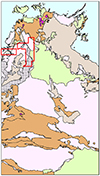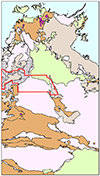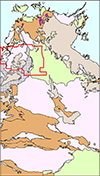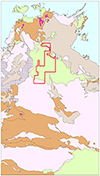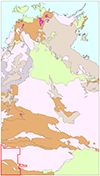Geophysical acquisition
This guide has information on regional gravity and airborne surveys undertaken by the Northern Territory Geological Survey (NTGS).
Geophysical acquisition programs include the capture and interpretation of regional gravity programs.
For recent and upcoming geophysical data acquisition visit the Resourcing the Territory website.
Regional gravity
The NTGS has commenced a program of semi-regional gravity surveys over selected areas that have unresolved geological problems and unrealised mineral potential.
There is growing awareness in the exploration industry that semi-regional gravity surveys can assist greatly in understanding rock distribution in the mineable zone.
Territory-wide gravity
NTGS conducts major regional gravity surveys, adding the resulting observations to the Geoscience Australia National Gravity Database.
Regions of interest can be downloaded from the Geophysical Archive Data Delivery System (GADDS).
Gravity images for the whole of the Northern Territory can be viewed on the Geophysical Image Web Server, by selecting "NT wide images", "gravity" and can also be viewed in conjunction with other geophysical images.
The NT-wide gravity images can also be made to underlie a wealth of other geoscience information provided by NTGS via STRIKE.
Airborne surveys
Since 1981, NTGS has been flying magnetic and radiometric surveys over mineral fields and basement terrains.
These surveys progressively replaced the old reconnaissance magnetic coverage by the Bureau of Mineral Resources (now Geoscience Australia).
Early surveys were acquired on 500m line spacing and collected four windows of radiometrics, without the benefit of precise control in x-y-z.
These surveys evolved in the early 1990s into a standard specification of high-resolution 400 m line spacing, with precise location control by DGPS, collection of elevation data and 256 channel radiometrics.
As of mid 2007, over 96% of the Northern Territory is covered by 57 separate surveys, including 3 surveys flown by Geoscience Australia.
Existing datasets
Existing NTGS and Geoscience Australia high-resolution surveys are shown on the NTGS airborne geophysical index map.
The geophysical survey index map and the gravity survey index map show the coverage areas of all the surveys. Images from the survey data and magnetic , radiometric, gravity and elevation maps of the Northern Territory are available for viewing on our Geophysical Image Web Server
Located data and grids for individual NTGS and Geoscience Australia surveys can be requested from the InfoCentre or downloaded from GADDS
Past surveys
For recent and upcoming geophysical data acquisition go to the Resourcing the Territory initiative.
Give feedback about this page.
Share this page:
URL copied!
